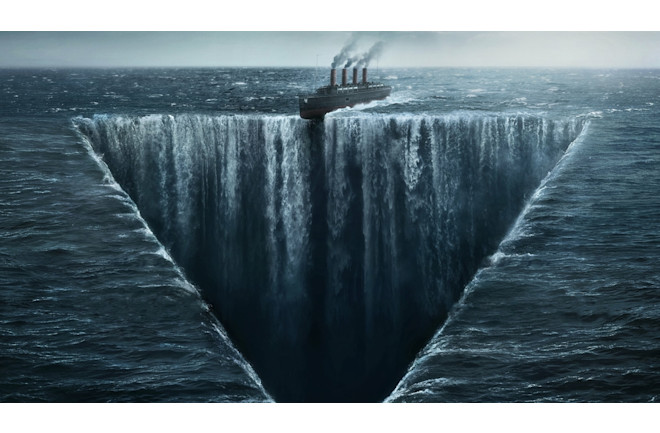Located just off the southeastern coast of the United States, the Bermuda Triangle refers to a stretch of ocean known for its ominous reputation. Over the years, vessels have reportedly vanished while crossing its turbulent waters, and aircraft have allegedly disappeared from radar with no explanation.
Such occurrences have inspired tales ranging from alien abductions to interdimensional portals. Some even describe the region as being somehow detached from the laws of nature. While these ideas are imaginative, they represent only one interpretation of the mystery.
Understanding the Bermuda Triangle
Geographic Location
The Bermuda Triangle is generally considered to form a triangle between Miami, Florida; San Juan, Puerto Rico; and Bermuda. This vast region covers hundreds of thousands of square miles in the North Atlantic and sees heavy commercial and military traffic.
The area has been the site of numerous unexplained aviation and maritime incidents. However, claims that these events are due to supernatural forces rather than environmental or statistical factors are highly questionable.
Over time, scientists and researchers have proposed several plausible explanations for the reported disappearances. The ocean is inherently perilous, and unpredictable weather conditions can create dangerous situations, especially in the volatile North Atlantic
Origin of the Name
The term “Bermuda Triangle” was popularized in a 1964 article published in Argosy magazine, titled “The Deadly Bermuda Triangle.” The piece recounted the vanishing of the USS Cyclops in 1918 and a group of military aircraft in 1945, among others. While the article emphasized the area’s mystery, it offered no concrete explanations.
Is It a Real Place?
Yes, the Bermuda Triangle exists as a geographic area. However, much of its reputation stems from dramatized accounts and anecdotal reports. Over time, various stories have contributed to its mythos, though many have been debunked or lack solid evidence. Alongside otherworldly theories, some scientific ideas have emerged to explain the phenomena, including navigational errors and natural hazards.
What Makes the Bermuda Triangle Seem Dangerous?

The area’s notoriety can largely be attributed to several factors: its high volume of maritime and air traffic, unpredictable weather, and the human tendency to focus on unusual events. Most of the incidents associated with the region can be attributed to natural causes rather than anything paranormal.
Heavy Traffic and Environmental Hazards
The Triangle is among the busiest shipping routes in the world. With so many vessels passing through, accidents are statistically more likely. Combine this with the region’s frequent hurricanes and storms, and it becomes clear why ships may go missing or sink.
Magnetic Fields and Navigational Issues
One theory suggests that anomalies in the Earth’s magnetic field might confuse navigational instruments. The Earth’s magnetic North is not the same as its geographic North, and compasses only provide accurate readings along specific lines known as agonic lines.
An agonic line passes near the Bermuda Triangle, potentially causing errors for navigators unfamiliar with this discrepancy. Additionally, the area is known for shallow waters and hidden reefs, increasing the risk of running aground. Although some have proposed that the Triangle contains a unique magnetic anomaly, scientific data does not support this claim.
Methane Gas Theory
Some scientists speculate that sudden releases of methane gas from underwater deposits could be responsible for the loss of ships. Such gas eruptions could reduce water density, causing vessels to sink rapidly. While the mechanics are scientifically valid, no recent methane eruptions have been documented in this region. According to U.S. Geological Survey scientist Bill Dillon, the last known release occurred roughly 15,000 years ago.
Rogue Waves
Another plausible explanation involves rogue waves—unexpectedly massive waves that can rise to heights of over 100 feet. These waves can potentially break large ships in half. British researchers have simulated these conditions to assess their impact on maritime safety. While rogue waves are real and dangerous, there is no definitive link between them and any specific Bermuda Triangle incident.
Official Stance and Reality Check
The U.S. government does not officially recognize the Bermuda Triangle, and it is not marked on any government-issued maps. Agencies such as the Coast Guard and the Department of Defense do not attribute any special significance to the area. Statistically, the region does not experience more shipwrecks or plane crashes than any other area with similar traffic levels.
The Psychological Angle
The enduring mystery of the Bermuda Triangle may be rooted more in human psychology than in actual geography. People tend to focus on strange or exceptional events, often ignoring more mundane explanations. This tendency, coupled with the Baader-Meinhof effect—where a concept seems more common after first noticing it—helps fuel the illusion that the Triangle is particularly dangerous.
Conclusion
The legend of the Bermuda Triangle persists due to a combination of cognitive bias, dramatic storytelling, and a few unexplained cases. But in reality, there’s no conclusive evidence that the area is more hazardous than other heavily traveled parts of the ocean. So, if you’re planning a trip to Bermuda, don’t worry too much—but always remember basic safety precautions when out at sea.



















